There are many dishes that are well-known in Japan but relatively unfamiliar abroad, and Mizore Jiru is a perfect example. Its thick consistency helps keep it warm for a longer time, and the refreshing flavor of grated daikon radish fills your mouth with every sip.

Jump to:
What is Mizore Jiru?
Mizore Jiru is a traditional Japanese soup made by adding grated daikon radish to dashi broth and seasoning the mixture. "Mizore" refers to a mix of snow and rain, and in a Japanese culinary context, it describes grated daikon, which resembles that appearance.
In Japan, there has long been a tradition of using this grated daikon, known as daikon oroshi, in various dishes, such as a garnish for grilled fish and tempura, or as an ingredient tossed in salads. Mizore Jiru is a dish that incorporates a generous amount of grated daikon to create a flavorful soup.
The defining feature of this soup is its ability to highlight the delicate flavor of daikon. While daikon is delicious when simmered or grilled, grating it allows its flavor to permeate the entire dish. I hope you enjoy this refreshing soup.

How to grate daikon
Some people might not be familiar with how to grate daikon radish, but don’t worry; it is really simple to do. All you need to do is take a grater (or a daikon grater) and move the daikon back and forth across it. If you don’t have this specific tool, you can use similar tools you have on hand. A food processor works too.
Typically, the spiciness of daikon can vary depending on which part you use and how you grate it. However, when it comes to the grated daikon used in mizore jiru, these factors don’t need to be considered. The spiciness of the daikon fades when heated, resulting in a milder flavor. While grating does take a little effort, the process itself isn’t difficult, so feel free to give it a try.
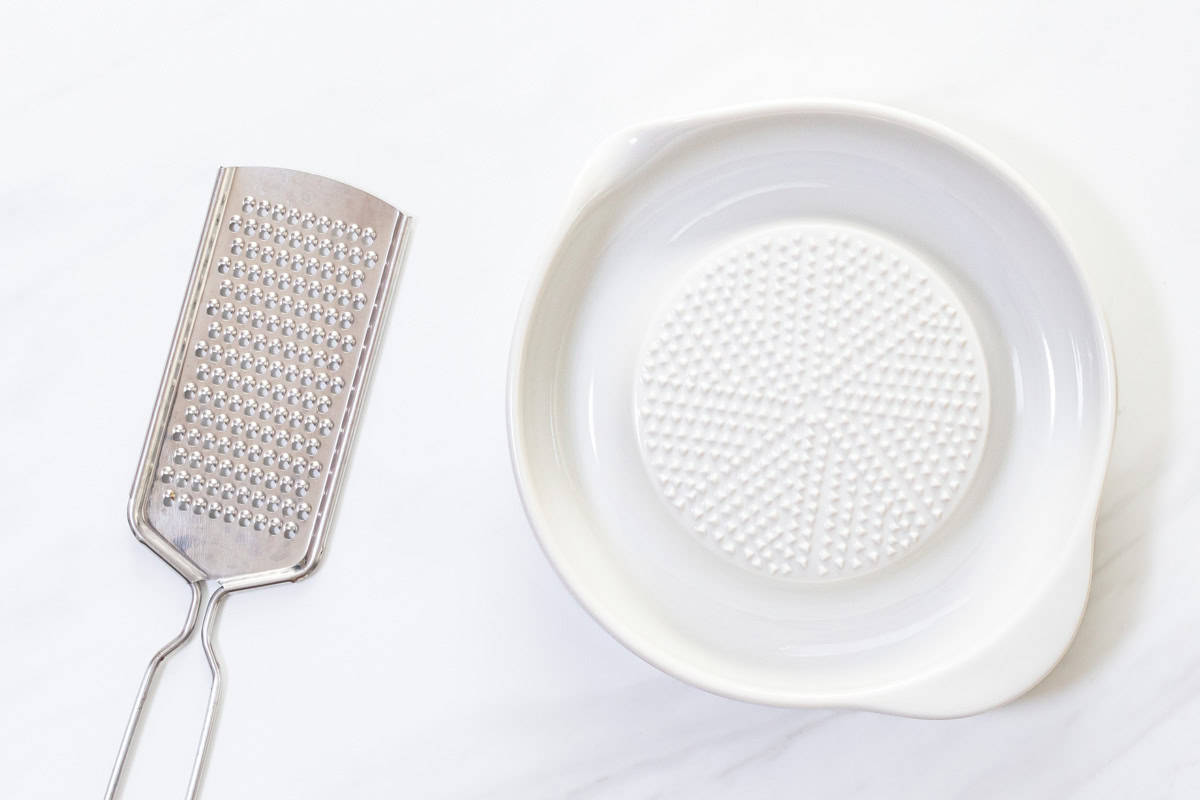
The hidden value of daikon juice
When grated, daikon radish releases a lot of moisture because it consists of more than 90% water. When making grated daikon alone, this juice is often discarded, but when making mizore jiru, it is best to use it.
The juice contains potassium, magnesium, vitamin C, and digestive enzymes, so by keeping it, you not only enhance the flavor but also benefit from its nutritional value.
Common additions
Mizore jiru is typically enjoyed with just a few additional ingredients. Common choices include nameko mushrooms, tofu, chicken, and pork, but you can also add vegetables like carrots and cabbage.
In this recipe, I used nameko mushrooms to add body and texture. However, since grated daikon is the star of this soup, it is best to keep the other ingredients to a minimum, even when customizing it.

📋Step-by-step recipe
Ingredients
- 7 oz daikon radish
- 3.5 oz nameko mushrooms
- 4 mitsuba (Japanese parsley)
Bonito dashi:
- 1 cup water
- ¼ cup bonito flakes (katsuobushi)
Seasonings:
- ⅓ tsp salt
- 1 tsp soy sauce
Instructions
🕒 Total: 15 minsIf you already have bonito dashi or another type of dashi, start from step 3. In that case, use ⅚ cups (200 ml) of your dashi for 2 servings.
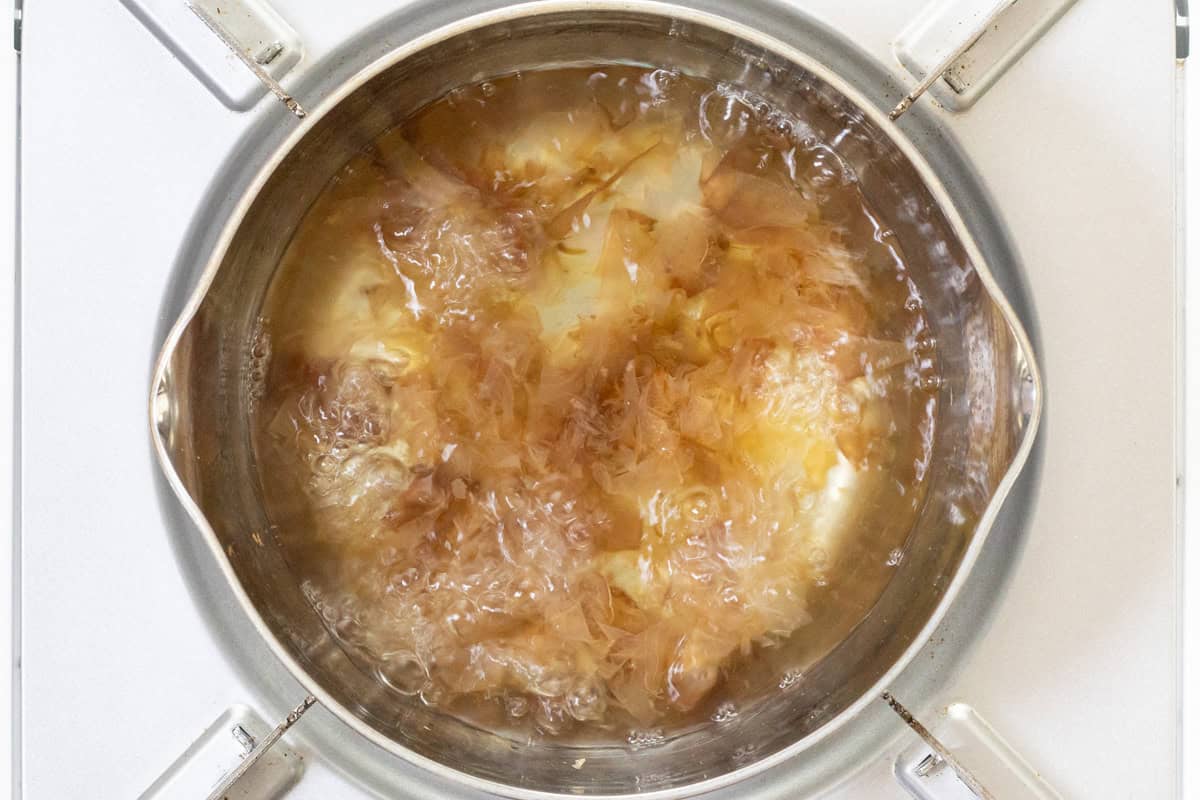
Step 1
Fill a pot with water and bring it to a boil. Once boiling, reduce the heat to low, add bonito flakes, and let it simmer for 3 minutes.
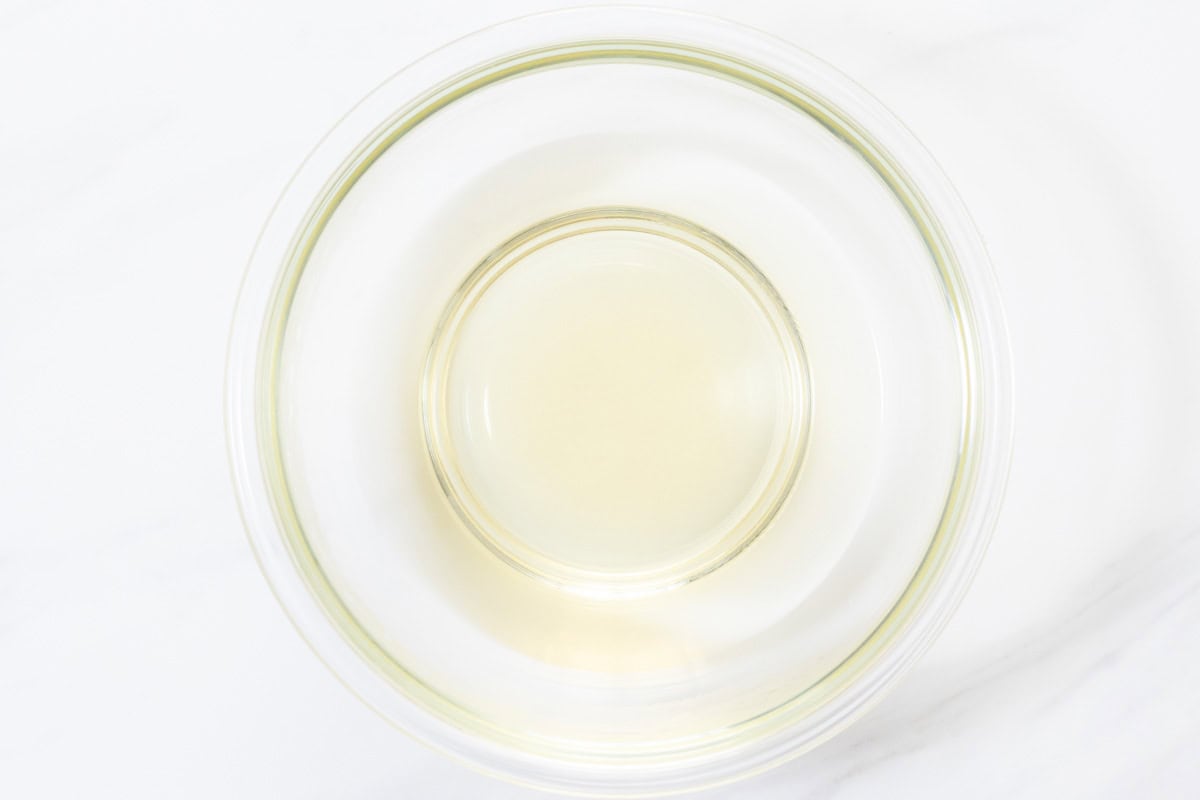
Step 2
Turn off the heat and strain the mixture through a sieve lined with paper towels or a cloth (such as cheesecloth). Alternatively, if you don't mind a few fine bonito flakes remaining, you can simply use a fine-mesh strainer. Bonito dashi is now ready.
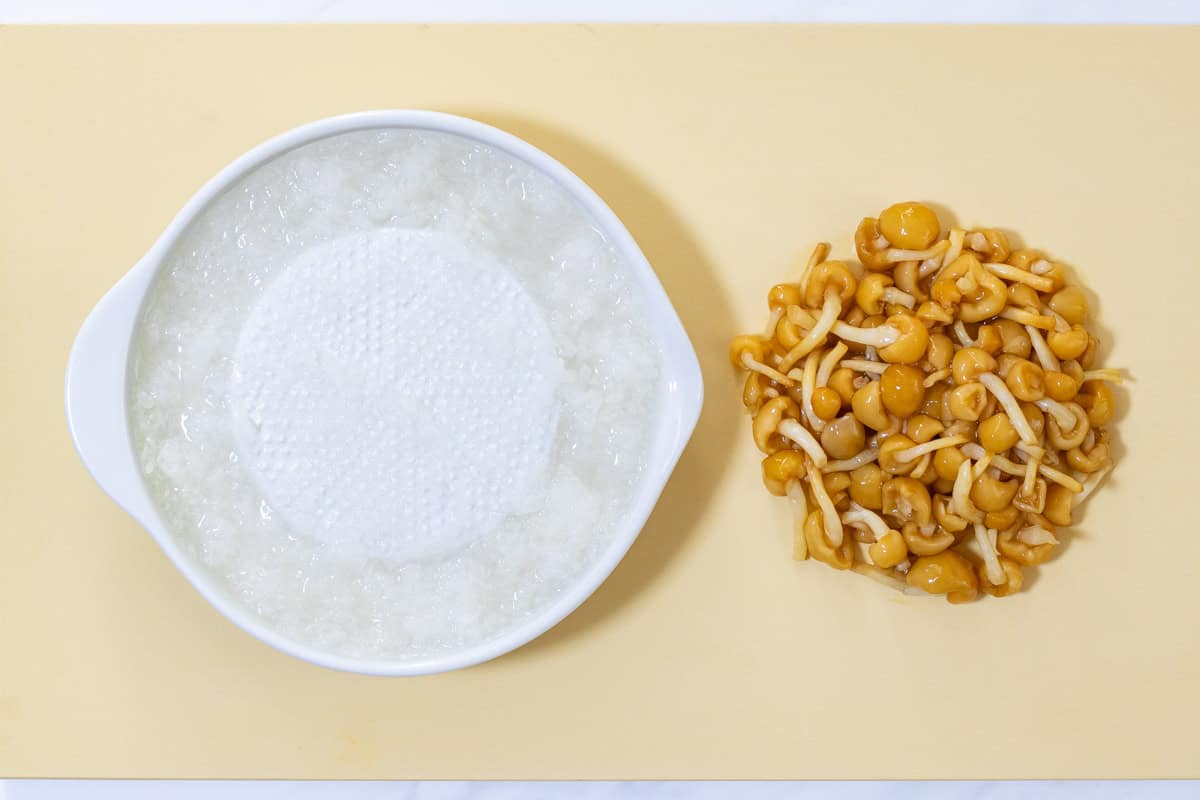
Step 3
Peel the daikon thinly and grate it (do not discard the juice). Trim the base of the nameko mushrooms and rinse them lightly.
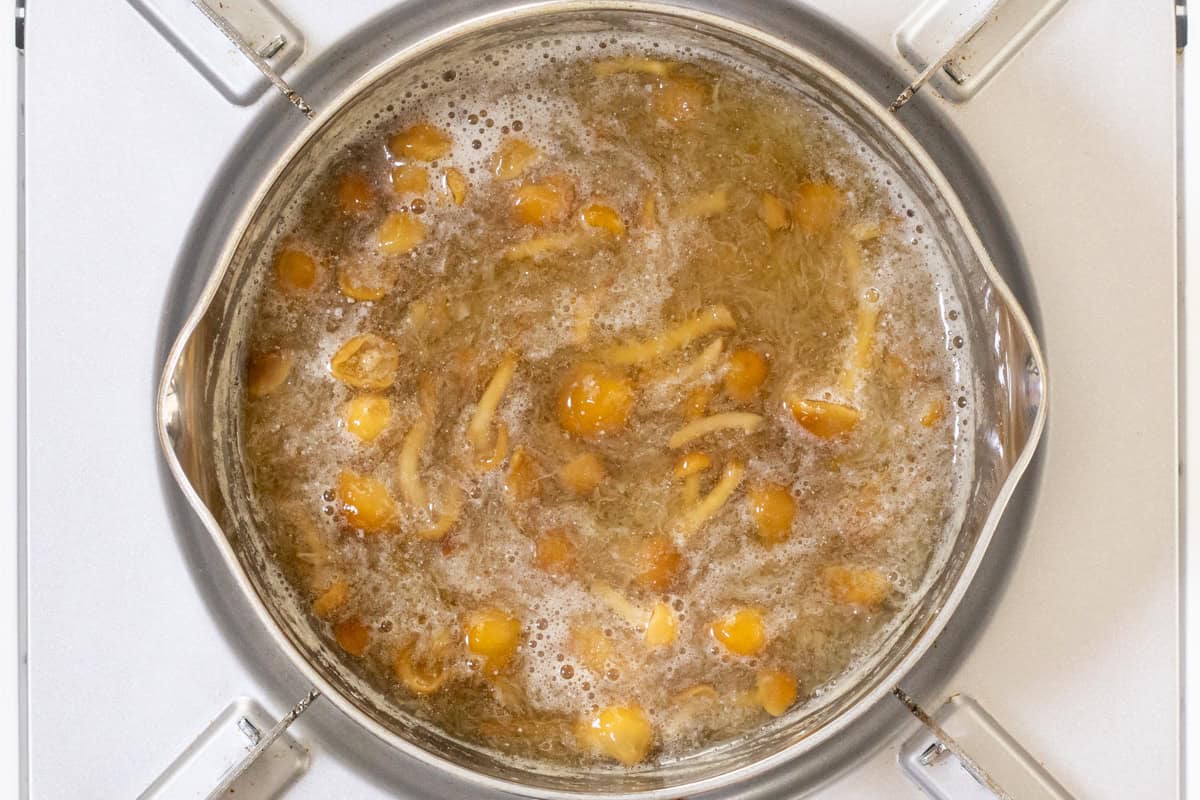
Step 4
Return the dashi to the pot, add the grated daikon with its juice, and bring it to a boil. (You can skim off any foam floating on the surface if desired.) Once boiling, add the nameko mushrooms and simmer them over low heat for 2 minutes. Then, turn off the heat, add salt and soy sauce, and let the flavors blend.

Step 5
Serve in individual bowls and top with mitsuba to taste.
To store
You can store it in the refrigerator for up to 2 days.

If you try this recipe, I’d love to hear what you think. Please consider leaving a review and star rating in the comments below. If you enjoyed it, I’d really appreciate it if you shared it with your friends.
More daikon recipes you'll love
Recipe card

Mizore Jiru (Japanese Grated Daikon Soup)
Ingredients
- 7 oz daikon radish
- 3.5 oz nameko mushrooms
- 4 mitsuba (Japanese parsley)
Bonito dashi:
- 1 cup water
- ¼ cup bonito flakes (katsuobushi)
Seasonings:
- ⅓ tsp salt
- 1 tsp soy sauce
Instructions
- Fill a pot with water and bring it to a boil. Once boiling, reduce the heat to low, add bonito flakes, and let it simmer for 3 minutes.
- Turn off the heat and strain the mixture through a sieve lined with paper towels or a cloth (such as cheesecloth). Alternatively, if you don't mind a few fine bonito flakes remaining, you can simply use a fine-mesh strainer. Bonito dashi is now ready.
- Peel the daikon thinly and grate it (do not discard the juice). Trim the base of the nameko mushrooms and rinse them lightly.
- Return the dashi to the pot, add the grated daikon with its juice, and bring it to a boil. (You can skim off any foam floating on the surface if desired.) Once boiling, add the nameko mushrooms and simmer them over low heat for 2 minutes. Then, turn off the heat, add salt and soy sauce, and let the flavors blend.
- Serve in individual bowls and top with mitsuba to taste.
Notes
- If you already have bonito dashi or another type of dashi, start from step 3. In that case, use ⅚ cups (200 ml) of your dashi for 2 servings.
- You can store it in the refrigerator for up to 2 days.

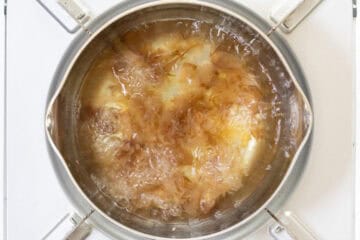
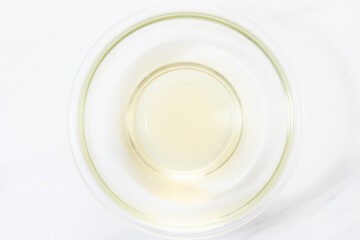
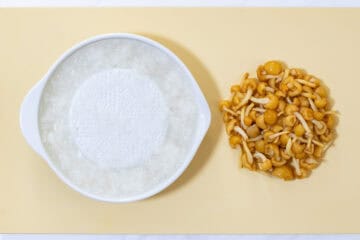


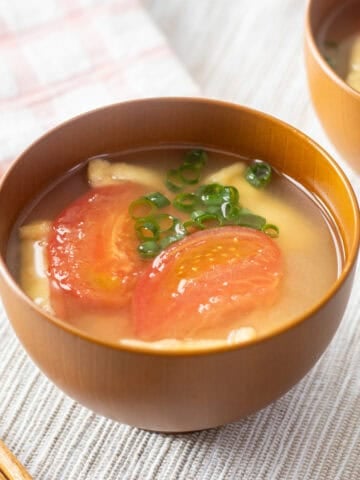
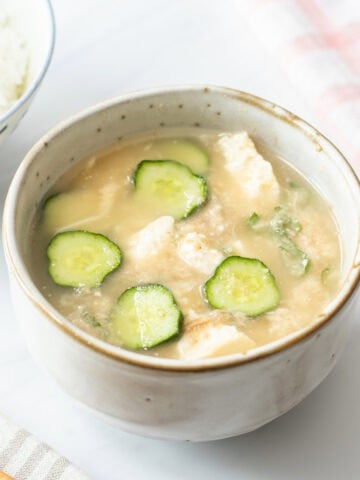
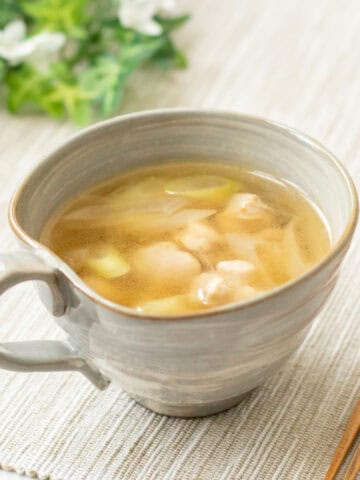
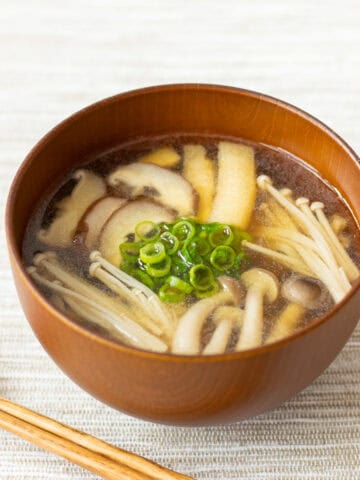
Leave a Rating and a Comment